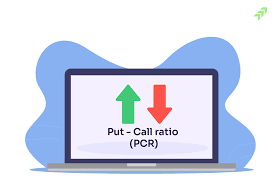Indeed, the world of options trading has lots of terminologies and a myriad of metrics to gauge market sentiment. However, among all such indicators, the Put-Call Ratio tends to be the prime metric for almost all traders gauging market outlook in general. This metric compares the number of put options to call options being thrown into the market, thereby providing insights into market sentiments and investor behavior.
1. The Put-Call Ratio as a Sentiment Indicator
The Put-Call Ratio is one of the significant indicators of sentiment and is utilized by several options traders to figure out market sentiment. In explicit terms, it is a ratio in respect of the volume of put options (gainers when the market falls) relative to the volume of call options (increasing in value with a rise in the market). A high put-call ratio is representative of puts-bearish sentiment, while a low ratio indicates that calls are bought-bullish sentiment.
Generally, a put-call ratio above 1.0 is a bearish indicator, while below 1.0 signals bullish or neutral sentiment. For example, 0.8 means that there are call options traded than put options, which probably indicates that traders believe the market will rise. A 1.2 ratio, on the other hand, might suggest that traders are prepping for a downward trend in the market.
2. The Put-Call Ratio’s Function in Short Straddles
It makes sense for traders adopting such strategies as the short straddle to appreciate the meaningfulness of the Ratio. The short straddle consists of writing both a call option and a put option at the same exercise price and expiry date. Such a strategy is used when the trader believes that the asset will not be volatile because the premiums received through both the options will be gained as long as the price of the underlying asset is relatively static.
This is how the Put-Call Ratio is and proves to be a simple instrument when it comes to being able to determine whether or not the market is going to remain in a stable range or tend toward price movement on either end of the range. For instance, if the ratio is lower than normal, it may mean that the market will be bullish and, therefore, less likely to collapse. Under such circumstances, the short straddle could be an attractive strategy for the trader since he or she expects the asset to move within a close range of prices.
A high Put-Call Ratio may indicate that most traders in the market have hedged to some extent against possible declining prices. This implies that increased volatility would be probable and that can prove a hazard for traders adopting a short straddle position. The price would move in an opposite direction; hence the losses on sold options would be humongous since the strategy is based on the assumption that the asset should stay in close range or a tight price range.
3. Understanding Extreme Put-Call Ratios
Put-Call Ratios are contrarian tools; however, you must keep in mind their extreme values too since these are the good contrarian signals. Extremes-high or low, mean that the market has overcooked and is almost due for a reversal.
Such extreme ratios are cautionary to traders using short straddle strategies. The sentiment is either too bearish or too bullish, the more it serves to create a likelihood for a big price move that could result in heavy losses. The trick is to determine when the Put-Call Ratio attains levels which could indicate overreaction of the markets so that an adjustment to your options strategy can be made.
Final Remarks
The Put-Call Ratio is really effective there with the perfect potency to gauge market sentiment; providing a clue at the right direction for the market. Whether you go short straddle or simply interested in understanding broader market trends, this understanding factor for how the ratio works will definitely enhance your decision-making.












Leave a Reply